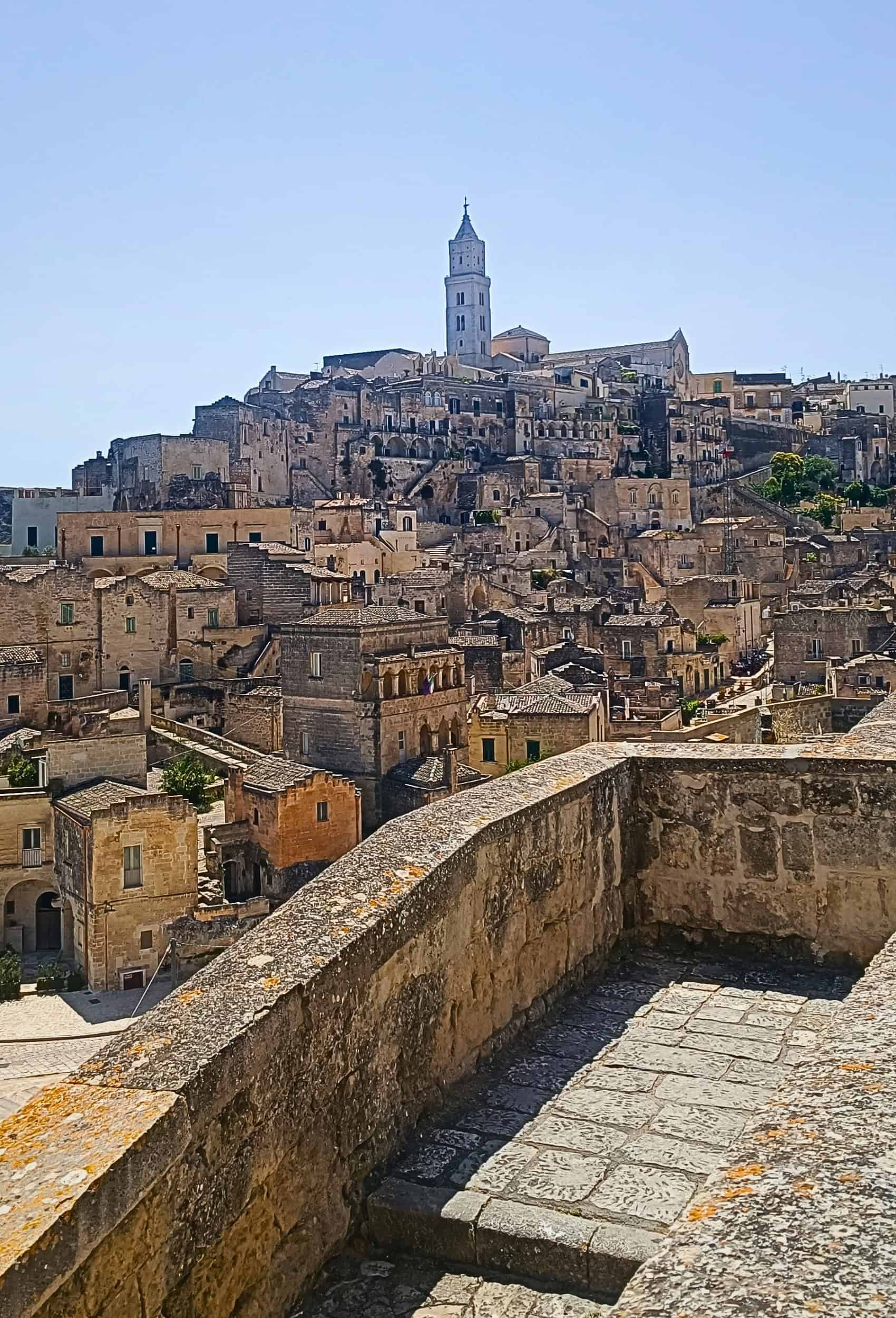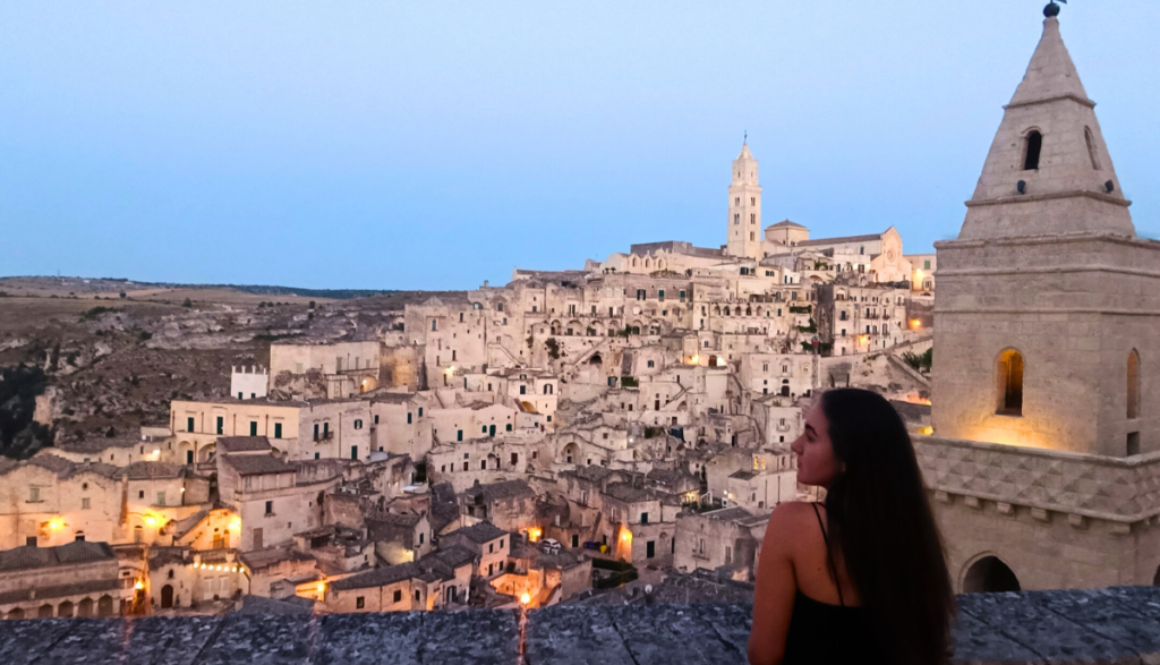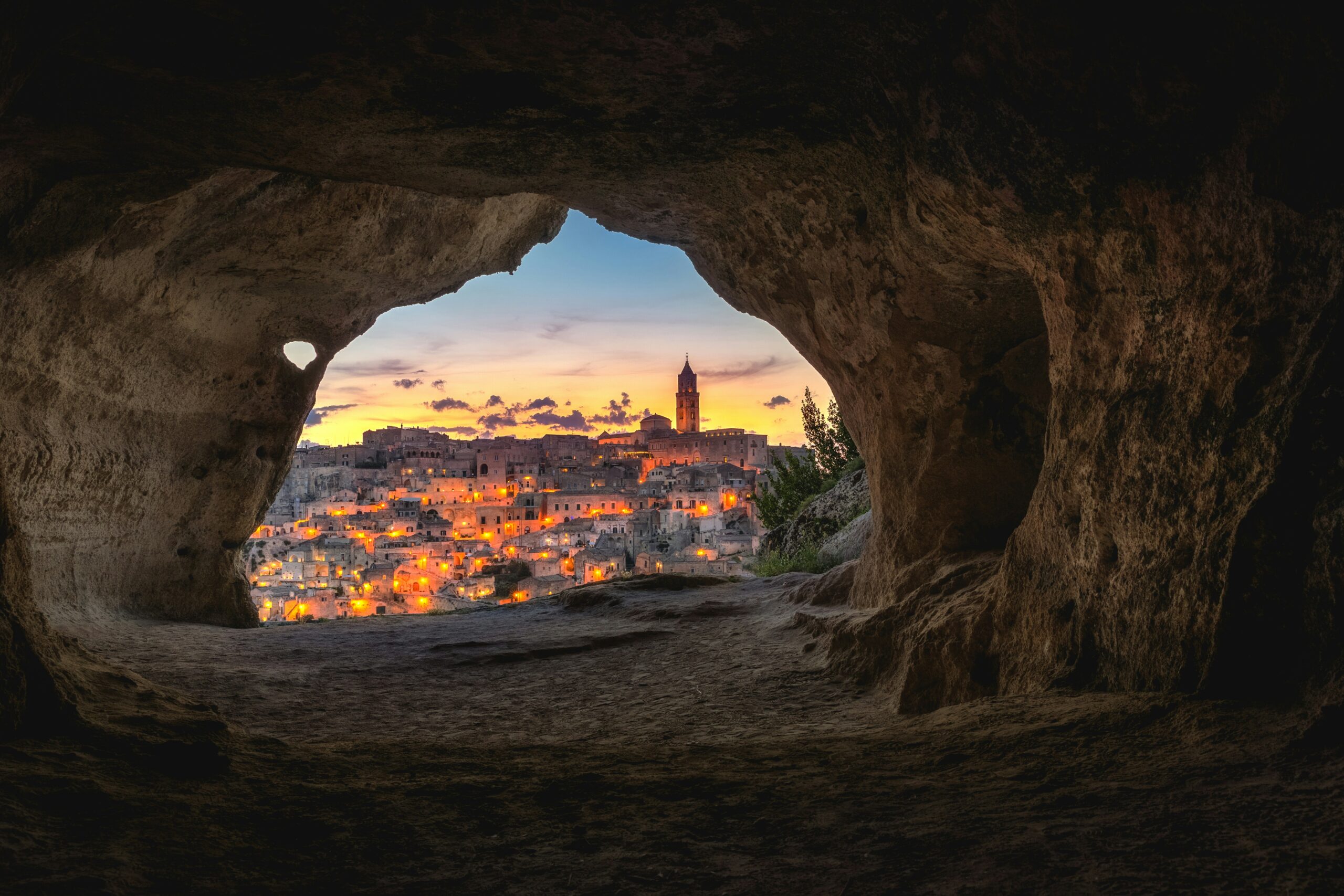This 9000-Year-Old Italian City Needs to Be On Your Travel Bucket List
Everyone has heard of Rome and Pompeii, the ancient cities filled with History to explore in the beautiful country of Italy.
Rome is nearly 3000 years old and Pompeii has 2000 years of History. They are on many people’s bucket lists and naturally they are amazing places to visit. It’s no wonder they get millions of tourists every year.
But what if I told you that there is a way older city in Italy that is still a hidden gem?
That city is called Matera and it’s actually Italy’s oldest city.


Matera is the oldest city in Italy
The History of this unique city started when people settled there as early as 7000 BC and lived in caves.
You can still see remains of those prehistoric caves today and it’s the experience of a lifetime, so you might be surprised to learn that this place was once considered “the shame of Italy”.
That’s right: Matera has gone through a lot, from a thriving prehistoric settlement, to an embarassing place for the nation and finally to a gorgeous city that is very slowly being discovered by tourists.
Did I get your attention? Great! Let me take you on a journey through thousands of years of History in a city that you will hopefully want to visit by the end of this post.
Matera
Do you remember that I wrote above that Matera is the oldest city in Italy? Well, this ancient city is way more than that: it’s considered by many as the oldest city in Europe and even one of the oldest continuously inhabited places in the whole World, after Aleppo and Jericho.
These facts will not surprise you if you have ever seen pictures of Matera. It looks ancient! Like a time capsule waiting to be explored.

Sassi di Matera
Prehistoric Matera
The most unique thing about the city of Matera is how you can still experience its prehistoric essence, even after thousands of years have passed.
Still to this day, you can visit caves where people lived in prehistoric times. That’s probably one of the coolest and most unforgettable travel experiences I ever had.
To explore the oldest part of Matera, you will need to cross the ravine and head to Murgia Materana Park.
That’s where you can find fascinating historic sites like the famous cave churches, the remains of villages that date back to Neolithic times and even a movie location of “The Passion of the Christ”.
Sassi di Matera
This is the name that the central part of Matera is known for.
It‘s the place where you will find plenty of accommodations, restaurants, stores and things to see and do.
Sassi di Matera is actually divided in two different districts: Sasso Caveoso and Sasso Barisano. Put together, they create that magical view of Matera that you have probably seen on pictures and videos.
Actually, you might even recognize it from some movies, since there have been several film productions taking place there, including “007 – No Time to Die”, “Wonder Woman” and “Mary Magdalene”.
There is so much to see and do in Sassi di Matera and I would definitely recommend you to explore on your own.
But one of the best decisions I made in Matera was to take a guided tour of the Sassi. It‘s such a historic city that even though it‘s an amazing experience to simply walk around and admire it, the most important part is learning more about its History.
Once you know the History of what you’re looking at, you can see Matera from a totally different perspective.
Sassi di Matera is so picturesque and really worth a visit
“The shame of Italy”
The city of Matera might have gone through thriving periods throughout History, but it was also considered a shame for the country at one point.
This city was made of caves and, as you can imagine, those weren‘t considered ideal conditions for humans to live in when society developed higher standards.
In fact, when I took a guided tour of the Sassi, I was shocked to learn about the previous chaotic reality of Matera from our guide.
People lived with electricity, sewage or hygiene conditions in the caves, turning the town into an open-air sewage. Extreme poverty was part of the reality of the population of Matera and malaria had easy grounds to spread like a bushfire.
Animals lived together in the caves with the city‘s inhabitants, which didn‘t make the living standards much better, as you can imagine.

From an embarassment to the nation to a UNESCO World Heritage Site
I’m sure you understand what a special place Matera is by now, thanks to all its History and the unique way in which it is built. But in my opinion there’s something that makes it even more special: the way in which it seems to come back from the ashes time after time.
Being nicknamed “the shame of Italy” could easily have been the final blow that made this city become forgotten and lost forever. Instead, it has become a thriving city with so much to see and do.
Not only is Matera a developed city ready to receive tourists by now, it’s even a UNESCO World Heritage Site.
The Sassi di Matera was awarded that title in 1993, giving the city the recognition it deserved all along.
If you made it this far, I hope you enjoyed learning more about the amazing italian city of Matera and that you decide to include it in your Italy itinerary!
I’ve been to Italy 5 times and visited countless cities all over the country but Matera has a very special place in my heart. I’m sure it will make an impression on you too if you decide to give it a chance!
📢 TIP: Don’t you have enough time to sleep in Matera? That amazing city is definitely worth an overnight stay but if you’re lacking enough time for it, check this day trip to Alberobello and Matera from Bari/Polignano.
DO YOU WANT TO HELP THIS PROJECT? USE THE LINKS BELOW AND I’LL GET A SMALL COMMISSION THAT REWARDS MY WORK 👇🏼
- Skyscanner: Find the cheapest flights 🛫
- Booking.com: Find the best accommodations, flights & car rentals 🛏️
- Hostelworld: Find the best hostels 📍
- AirHelp: Get paid if your flight was delayed or cancelled 💰
- Airalo: Get an Esim and stay online abroad 📱
- Omio: Find the best transportation options anywhere in the World 🚆
- 12goAsia: Book transportation in Asia 🚌
- Trip.com: Get the best discounts on flights, hotels & car rentals 💰
- Get Your Guide: Book the best tours & buy entrance tickets 🎫
- Tripadvisor: Find other travelers’ opinions ✍🏼
- Rental Cars: Rent a car for your trip 🚗
- Discover Cars: Get up to 70% discount on car rentals 💰
- Revolut: Stop paying for exchange fees abroad 💳
- Surfshark: Get a discount on your VPN 💻
- Klook: Get 10% discount on Klook 🤑
- IATI Insurance: Get 5% discount on your travel insurance 🔒
- Worldpackers: Find voluntering opportunities in more than 140 countries 🌎
- Viator: Find tours around the World 🎟️
- Osprey: Find the best backpacks on the market 🎒
- LARQ: Get a self-cleaning bottle that kills viruses and germs 🦠
- TravelSpend: 50% discount on the best budget-tracking app 💰






